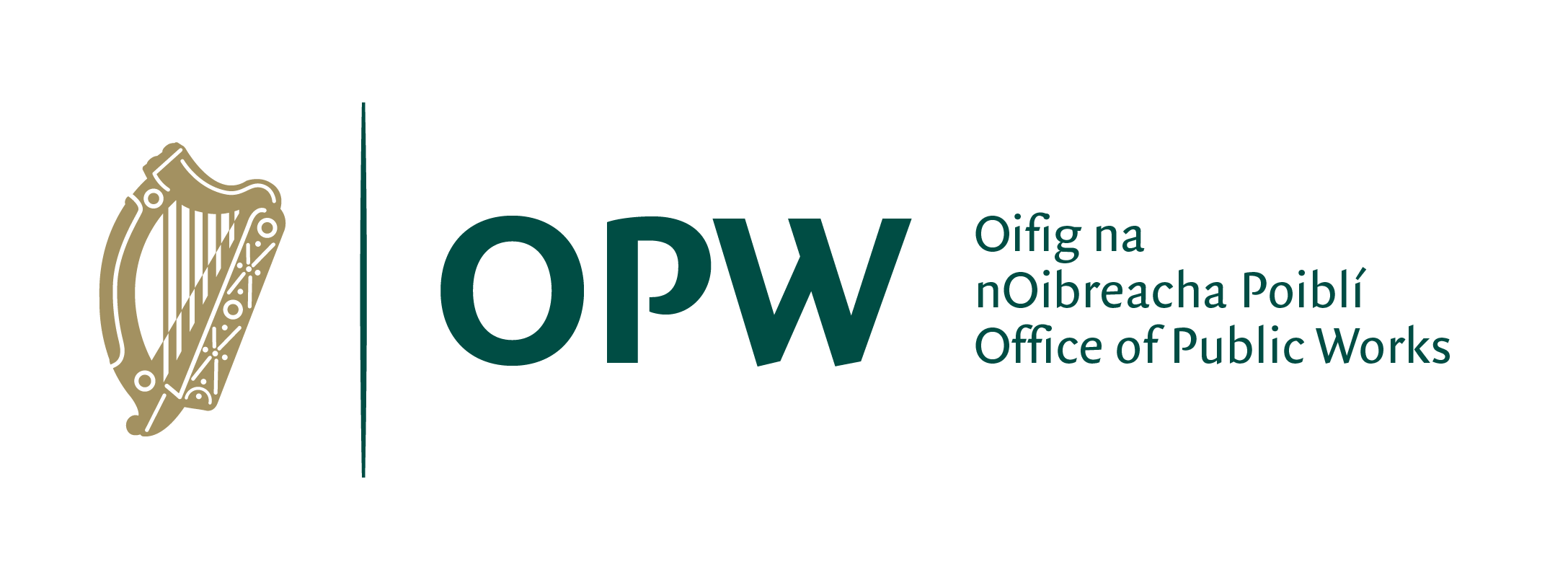by Maria O’Hanlon, Office of Public Works, Farmleigh.
The portrait of Lucy de László (née Guinness) hangs in the hallway in Farmleigh House. The collection of art at Farmleigh comprises paintings, prints and sculptures on loan from the Guinness family, former owners of Farmleigh House, collections from the Office of Public works, added to enhance the Irish cultural connections of the building after it was purchased by the state in 1999, and finally paintings and sculpture on loan from the National and Dublin City Galleries of Art.
Forbidden love
The portrait of Lucy is on loan from the Hugh Lane Gallery and dates to 1902. Lucy first met Philip de László ten years earlier, while studying music with her sister in Munich in 1892. The artist, who had studied at the National Academy of Arts in Hungary, had travelled to Munich to study at the Royal Bavarian Academy. Lucy, a granddaughter of Robert Rundell Guinness, co founder of the Guinness Mahon bank, was discouraged from courting a student artist, even though de László had already won his first portrait commission some years earlier in 1889. He and Lucy were to part ways for a number of years.

Growing talent
Born Laub Fülöp, later changing his name to de László, Philip started painting sets as a youth before being apprenticed, then enrolled in the school of applied arts in Budapest. His talent had been recognised at an early age in his native Hungary and won him a state scholarship. After studying art in academies in Hungary, Paris and Munich he was selected to paint the Bulgarian Royal Family in 1894. This led to a portrait commission of Emperor Franz Joseph in 1899 and in 1900 his portrait of Pope Leo XIII won him a gold medal in the Paris International Exhibition. De László was inspired by nature and the accurate depiction of its beauty, favouring the old masters for inspiration. In his portraits he sought to achieve a realistic likeness in the features combined with a deeper sense of the person and their character. His reputation quickly shifted to that of an internationally acclaimed artist. He was widely sought out by members of the aristocracy as well as royalty as a portrait painter. Permission was finally granted for he and Lucy to marry.
The artist’s arrest
Philip and Lucy lived in Budapest, then Vienna, then moved to London in 1907. De László continued to succeed as an artist, painting society members and public figures. He was ennobled in 1912 by Franz Joseph of Hungary and became a British citizen in 1914. His luck was to change during the First World War. A growing suspicion surrounded artists at the time, particularly those who worked outdoors or by the coast, that maps, plans and codes were being sketched to send to the opposition. After the interception of personal letters to his family in Hungary de László was accused of engaging in contact with the enemy. Having had close personal access to leading political figures for portraits as well as correspondence abroad, he was considered a threat and was interned for over a year. There was public outcry that his British citizenship should be revoked before he was released and cleared of disloyalty.
De László’s success
After the war, the incident seemed to have little effect on de László’s demand as an artist and he continued to engage in portrait commissions, painting members of the British Royal family well into the 1930’s, including Queen Elizabeth II when she was just a child. Throughout his career as an artist he was awarded numerous medals, awards and honours.
De László was a popular choice for sitters due to the speedy nature of his work. He produced study portraits in preparation for his paintings. These painted sketches of the sitters, often completed in a matter of hours, were further developed into finished pieces in his studio. A demand developed for the sketches themselves as the likeness was captured quickly and the painting could be purchased for a very reasonable sum. The Marques of Landsdowne in 1920 insisted on offering the artist more than the initially agreed fee, so impressed he was with the completed painting, having expected a simpler sketch rather than a full oil portrait.
A productive artist, it is estimated that he painted 2700 portraits over his lifetime. The 1902 portrait depicts Lucy with a violin, referencing her musical talent and interest, and perhaps alluding to her musical studies in Munich, where she and the artist first came across one another. Preparatory sketches for the portrait were worked on on holiday in Rothéneuf, the artist’s first since his honeymoon, and it was one of the first portraits where de László introduced landscape as a background to the figure. The portrait is gentle and tender, one of at least five portraits the artist painted of his wife.
The portrait of Lucy is one of many portraits depicting members of the extended Guinness family in Farmleigh. Farmleigh House originally belonged to Edward Cecil Guinness, great grandson of the famous Arthur Guinness and manager of the Guinness brewery. Portraits of the banking line of the Guinness family, descendants of Arthur Guinness’ brother Samuel, and the ministerial line of the Guinness family feature in Farmleigh along with art pieces collected by Edward Cecil Guinness himself. Another highlight is the portrait of Mrs Noel Guinness and her daughter Margaret by Walter Osborne, which won a bronze medal in the 1900 Paris International Exhibition. Tours highlighting the various art collections can be booked by contacting Farmleigh reception.


